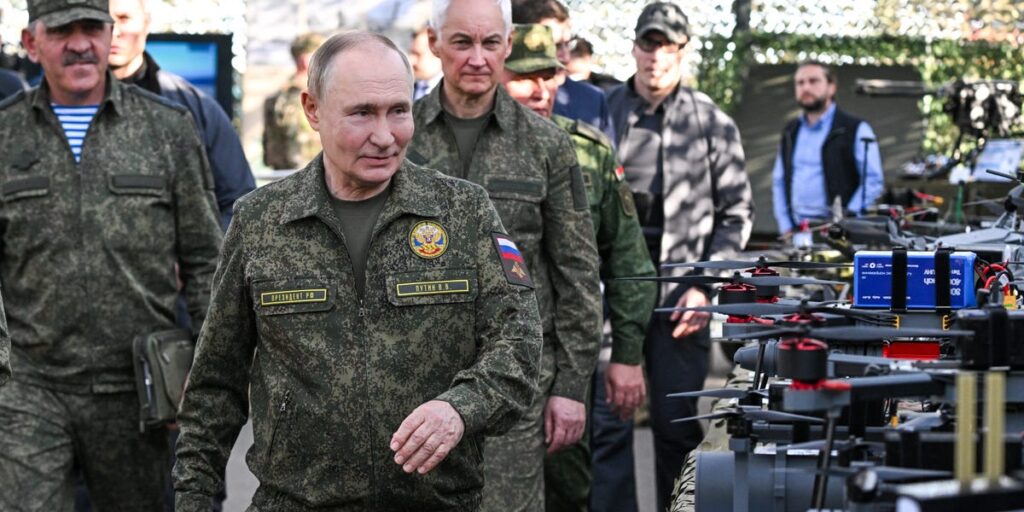Russia’s economy has slowed to a pace that could jeopardize its ability to cover surging defense, security, and social costs, warned a top business leader.
“It seems to me that indeed, this cooling or ‘managed soft landing’ is not very soft and not very managed,” Alexander Shokhin, the head of the Russian Union of Industrialists and Entrepreneurs, told Rossiya 24 TV channel on Tuesday.
Shokhin said that at the start of the year, officials assumed Russia needed at least 2% annual growth to cover defense, security, social spending, and investment. But growth is now expected to fall well short of that target.
He said Russia would be “lucky” to see GDP growth of just over 1% by the end of 2025 and 1.3% in 2026. Russia’s central bank has forecasted 1.0% to 2.0% GDP growth for 2025 — sharply lower than Russia’s 4.3% GDP growth in 2024.
Meanwhile, analysts polled by Interfax news agency expect Russian economic growth to come in at 1.1% this year — down from their August forecast of 1.4%.
“This is low, undoubtedly. Therefore, it is very important that this period of cooling or managed contraction, or ‘managed soft landing,’ does not drag on, because a rebound is already needed,” Shokhin said.
Since its full-scale invasion of Ukraine triggered sweeping Western sanctions, Russia has kept its economy afloat through massive defense spending and revenue from oil and gas exports.
That spending has kept factories busy and supported output — but at a cost.
Russia’s economy has become so militarized that its top central banker warned at the end of 2023 that it risked overheating. To cool demand, the central bank sharply raised interest rates, a move that curbed inflation but further slowed growth.
Shokhin argued that Russia needs a stronger, sustainable baseline growth rate to remain stable.
“2% to 2.5% is that optimal economic growth rate for a non-overheated economy that indeed makes it possible to solve a wide range of tasks,” Shokhin said.
Last month, Russian President Vladimir Putin said he was looking to hike taxes on the rich to bankroll the war in Ukraine that started in February 2022.
“Tax increases confirm that the Kremlin is preparing for long-term military financing, for which consumers are beginning to pay, and on which the military-industrial complex continues to flourish,” wrote Alexander Kolyandr, a senior fellow at the Center for European Policy Analysis, in a Monday report.
Read the full article here


